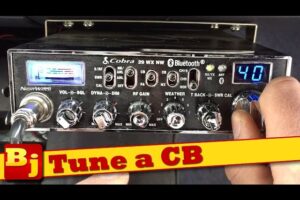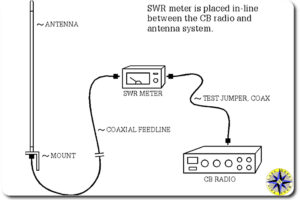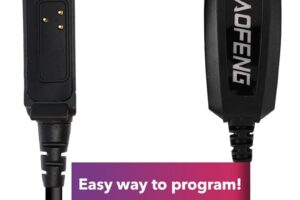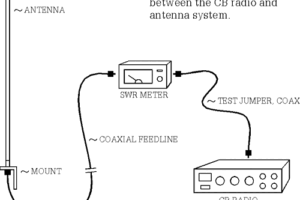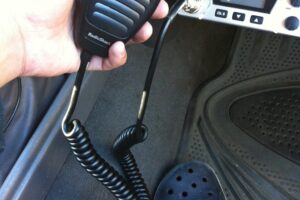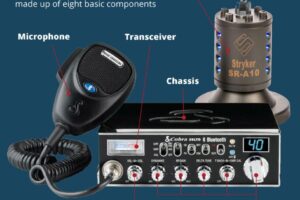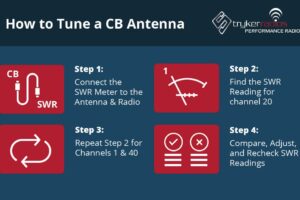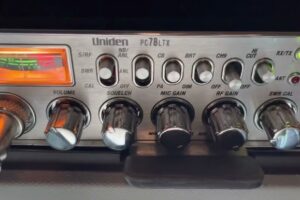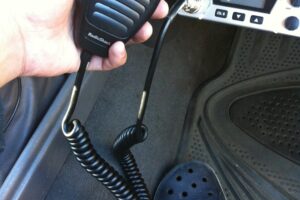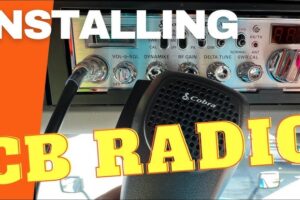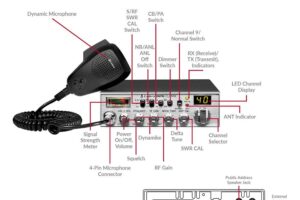How to Set Up a CB Radio: A Beginner’s Guide
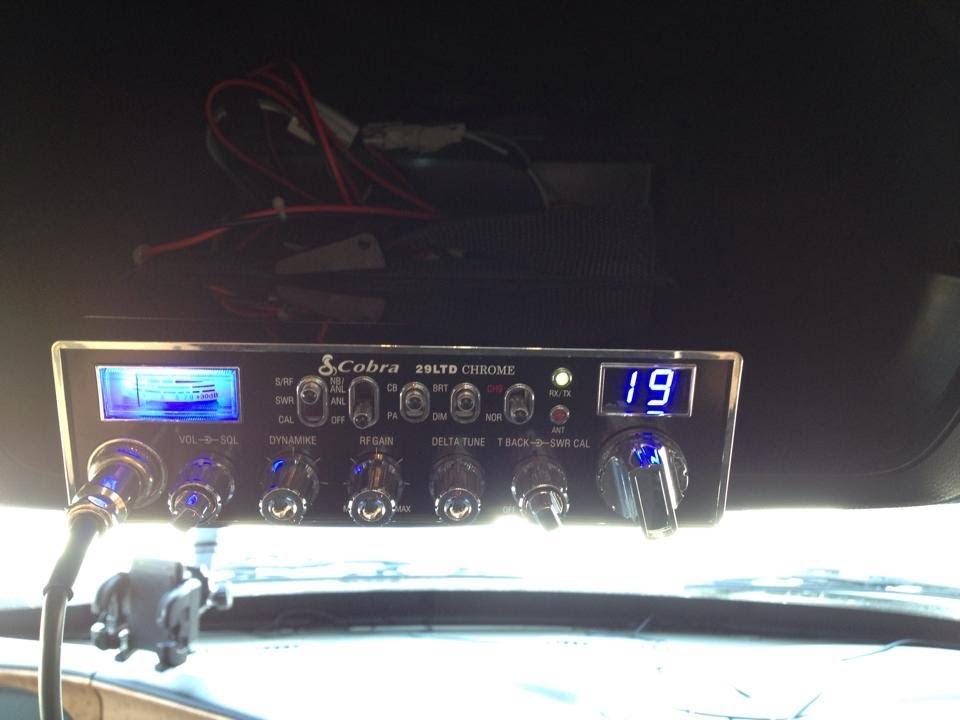
Setting up a CB radio can seem tricky at first. But with a few steps, you can have it ready quickly.
CB radios are a great way to communicate on the road or in remote areas. They are popular among truckers, hobbyists, and off-road enthusiasts. Setting one up involves connecting the radio, antenna, and power supply. Each step is important to ensure good performance and clear communication.
In this guide, we will break down the process into simple steps. By the end, you will have a working CB radio, ready to use. So, let’s get started and make setting up your CB radio easy and stress-free!
Credit: www.reddit.com
Introduction To Cb Radios
Citizens Band (CB) radios are a staple in communication tools. They are widely used by truckers, hobbyists, and emergency responders. Learning how to set up a CB radio can seem daunting, but with a little guidance, it’s manageable. This guide will help you understand the basics and get started quickly.
What Is A Cb Radio?
A CB radio is a two-way communication device. It operates on 40 shared channels within the 27 MHz band. CB radios are available to the public without a license. They are used for both personal and business communication. The range of a CB radio can be up to 20 miles, depending on conditions and equipment.
Benefits Of Using A Cb Radio
CB radios offer many benefits. They are reliable for communication in remote areas. Unlike cell phones, they don’t depend on network coverage. You can use a CB radio to get real-time traffic updates from other drivers. This can help you avoid delays and find alternative routes. In emergencies, CB radios can be lifesavers. They allow you to call for help when other communication systems fail. Additionally, they are useful for coordinating group activities and events. With a CB radio, you can stay connected and informed.
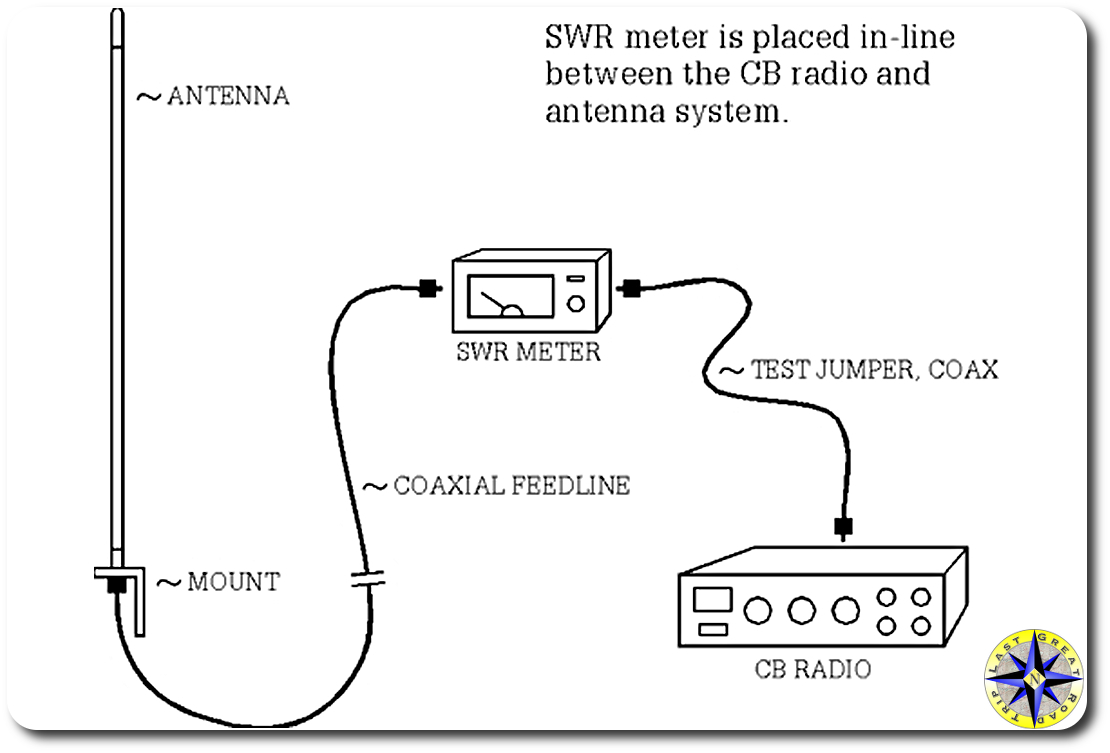
Credit: www.lastgreatroadtrip.com
Choosing The Right Cb Radio
Choosing the right CB radio is the first step in setting up your communication system. CB radios come in various types, and each has unique features. Understanding these types and features can help you make the best choice.
Types Of Cb Radios
There are several types of CB radios. Handheld CB radios are portable and easy to carry. Mobile CB radios are designed for use in vehicles. Base station CB radios are meant for stationary use, often at home or in an office. Each type has its own set of advantages and disadvantages. Consider your needs before making a decision.
Key Features To Look For
When choosing a CB radio, look for specific features. Check the number of channels available. Most CB radios have 40 channels. Some models offer weather channels too. Squelch control is another important feature. It helps reduce background noise. Look for radios with ANL (Automatic Noise Limiter) or noise blanker. These features improve sound quality. Also, consider the radio’s power output. The maximum power for CB radios is 4 watts. This is regulated by law.
Other features include PA (Public Address) capability and RF gain control. PA capability allows you to use your CB radio as a loudspeaker. RF gain control helps improve signal reception. Some radios also come with built-in SWR meters. These meters help you tune your antenna for the best performance. Choosing a radio with these features can enhance your communication experience.
Essential Accessories
Setting up a CB radio involves essential accessories like an antenna, coaxial cable, and a power supply. Proper installation ensures clear communication and enhances overall performance.
Setting up a CB radio can be an exciting venture, but to get the most out of it, you need the right accessories. Without them, even the best CB radio may not perform to its full potential. Below are some essential accessories you will need to ensure your CB radio setup is top-notch.Antennas
Antennas are crucial for your CB radio’s performance. The right antenna can significantly improve your signal strength and range. A popular choice is the whip antenna due to its excellent reach and durability. Think about where you will mount the antenna. A roof or bumper mount usually provides better performance. Remember, a longer antenna generally offers better range, but make sure it fits your vehicle’s dimensions.Microphones
A good microphone can make your communication clearer and more efficient. Stock microphones are decent, but upgrading to a power microphone can enhance audio quality. This helps especially in noisy environments. Consider a microphone with noise-canceling features. It filters out background noise, making your voice more distinct. This is a must-have if you drive a lot in urban areas.Mounting Hardware
Mounting hardware ensures your CB radio is securely installed. A sturdy mount can prevent your radio from bouncing around, which is essential for both safety and performance. You can choose from several types of mounts, such as dash mounts, floor mounts, or even overhead mounts. Make sure the hardware you pick is compatible with your vehicle. Double-check dimensions and weight capacities. Also, don’t forget to use rubber gaskets to minimize vibrations. What accessories have you found most useful in your CB radio setup? Share your experiences to help others create the best setup possible!
Credit: www.youtube.com
Installing The Cb Radio
Setting up a CB radio can be an exciting venture, but it requires some steps to ensure optimal performance. One crucial part of this process is installing the CB radio. This involves mounting the radio and connecting the power supply. Let’s dive into each step to make your installation smooth and efficient.
Mounting The Radio
Mounting your CB radio is an important task. Start by choosing a convenient location in your vehicle. Ensure it’s within reach and doesn’t obstruct your driving.
Use a sturdy mounting bracket that comes with your CB radio. Secure it firmly to your chosen spot. This could be under the dashboard, on the center console, or even on the overhead space.
Double-check the stability. A well-mounted radio stays put even during bumpy rides. You don’t want it to wobble or fall.
Connecting Power Supply
Connecting the power supply is another vital step. Locate your vehicle’s fuse box. This is usually found under the dashboard or hood.
Use a fuse tap to connect your CB radio to a power source. Make sure you choose a fuse that is only active when the ignition is on, to avoid draining your battery.
If your radio has a direct battery connection, ensure the red wire goes to the positive terminal, and the black wire to the negative. This prevents any electrical mishaps.
Keep the wires neatly organized and secured. Loose wires can be a safety hazard and might cause connection problems.
Setting up a CB radio doesn’t have to be daunting. Have you ever installed one before? What challenges did you face? Share your thoughts and experiences to help others in the community.
Setting Up The Antenna
Position the CB radio antenna on your vehicle for the best signal. Secure it firmly and connect it to the radio. Adjust the antenna for optimal performance.
Setting up your CB radio antenna is a crucial step to ensure you get the best performance and range from your device. A well-installed antenna can make the difference between crystal clear communication and frustrating static. Let’s dive into the essential steps to get your antenna set up correctly, starting with choosing the right location and ensuring proper grounding techniques.Choosing The Right Location
The location of your antenna is key to its effectiveness. You want to place it as high as possible for the best signal. For most vehicles, the roof is an ideal spot. It offers a clear, unobstructed path for the signal. If mounting on the roof isn’t an option, consider the trunk or the hood. Keep in mind that the antenna should be away from any metal objects that could interfere with the signal. This includes roof racks, cargo carriers, and other antennas.Proper Grounding Techniques
Grounding your antenna properly is essential for optimal performance. Without proper grounding, you might experience poor transmission quality. Ensure the mounting surface has a good electrical connection to the vehicle’s chassis. This often means scraping away paint to expose bare metal. Use a grounding strap to connect the antenna mount directly to the vehicle’s frame. This ensures a solid connection and better signal quality. Regularly check the ground connections for corrosion or wear. Keeping these connections clean and secure will maintain your antenna’s performance. By following these steps, you can ensure your CB radio antenna is set up for peak performance. Are there any challenges you’ve faced while setting up your CB radio antenna? Share your thoughts and let’s troubleshoot together!Tuning And Testing
Setting up a CB radio involves tuning and testing to ensure clear communication. This section will guide you through the process of using an SWR meter and performing a radio check. These steps are crucial for optimal performance and safety.
Swr Meter Usage
An SWR meter helps measure the efficiency of your antenna. Start by connecting the SWR meter to your CB radio. Turn on the radio and set it to channel 1. Switch the meter to the “Forward” position. Key the microphone and note the reading on the meter.
Next, switch to channel 40 and repeat the process. Compare both readings. The goal is to have a low SWR reading on both channels. Adjust your antenna length if needed. This ensures better transmission and reception.
Performing A Radio Check
A radio check confirms your CB radio is working correctly. First, find an open channel. Avoid busy channels to prevent interruptions. Key the microphone and say, “Radio check.” Listen for a response. If someone replies, your radio is transmitting well.
If no one responds, check your connections and settings. Make sure the antenna is properly tuned. Repeat the radio check on different channels. This helps verify your radio’s range and clarity.
Basic Operations
Setting up a CB radio may seem daunting at first, but understanding the basic operations can make the process smoother. Once you grasp the fundamentals, you’ll be on your way to clear and effective communication. Here are some key aspects to get you started.
Adjusting Controls
The first step is to familiarize yourself with the controls on your CB radio. Start with the volume control. Turn it up until you can hear clearly.
Next, adjust the squelch control. This helps to eliminate background noise. Turn the squelch knob clockwise until the noise stops, but don’t go too far or you might miss weak signals.
Many CB radios also have a RF gain control. This adjusts the receiver’s sensitivity. If you’re getting too much interference, reduce the RF gain.
Using Channels And Frequencies
CB radios operate on 40 channels. Channel 19 is commonly used by truckers for road information. You might want to start here to listen in and get a feel for the conversations.
Each channel operates on a different frequency. For instance, Channel 19 corresponds to 27.185 MHz. Knowing this can help when tuning your radio for better reception.
Remember to follow the etiquette of CB radio use. Listen before you speak. This ensures you don’t interrupt ongoing conversations.
Setting up a CB radio might seem technical, but with these basic operations, you’ll be communicating like a pro in no time. What tips have you found helpful when using your CB radio?
Troubleshooting Common Issues
Setting up a CB radio can be straightforward, but like any tech gadget, you might encounter some common issues. Whether it’s interference or poor signal reception, troubleshooting these problems is key to enjoying a smooth communication experience. Let’s dive into the most common issues and how you can fix them.
Interference Problems
Interference can be frustrating. It often comes from other electronic devices or power lines. You might hear a constant hum or strange noises on your CB radio.
First, try moving your radio to a different location. Sometimes, just a few feet can make a big difference. If that doesn’t help, turn off nearby electronics one by one to identify the culprit. Once identified, keep that device off when using your radio or find a way to shield your radio from its interference.
Another tip is to use a high-quality coaxial cable. Cheap cables can easily pick up interference. Ensure all connections are tight and corrosion-free. Loose or corroded connections can also cause interference.
Poor Signal Reception
Poor signal reception can make your CB radio nearly useless. It’s often caused by issues with your antenna. Make sure your antenna is properly installed and grounded. A well-grounded antenna can significantly improve reception.
Check the SWR (Standing Wave Ratio) of your antenna using an SWR meter. A high SWR indicates a mismatch in your antenna setup. Adjust your antenna length or position to achieve a lower SWR. Aim for an SWR reading of 1.5 or lower for optimal performance.
If you’re still having trouble, consider the height and location of your antenna. The higher and more unobstructed it is, the better your signal reception will be. Avoid placing your antenna near large metal objects that can block or reflect signals.
Have you ever had to deal with interference or poor signal reception? What worked for you? Share your experiences and tips in the comments below! Your insights could help someone else fix their CB radio issues.
Tips For Effective Communication
Setting up a CB radio involves selecting the right antenna, mounting it properly, and tuning the radio for clear communication. Ensuring a good ground connection and choosing a quiet channel are key.
Setting up your CB radio is just the beginning. To make the most of your communication experience, understanding key tips for effective communication is crucial. This ensures your messages are clear, concise, and well-received by others in the CB radio community. ###Cb Radio Etiquette
Good etiquette on the CB radio is essential. Always start your transmission with “break” or your handle. This indicates to others that you wish to join the conversation. Avoid talking over others. Wait for a break in the conversation before speaking. This shows respect for fellow users and keeps communication clear. Keep your messages short and to the point. Long-winded transmissions can be confusing and frustrating for others. A concise message is always more effective. ###Maximizing Range And Clarity
A well-placed antenna can significantly improve your range. Position it as high as possible on your vehicle or structure. This helps your signal travel farther. Regularly check and maintain your equipment. Clean connections and a properly tuned radio ensure the best performance. Don’t neglect this simple but effective step. Adjust your squelch control to minimize background noise. This allows you to hear clearer transmissions without constant static. It’s a small tweak with a big impact. Think about how you can make your CB radio communication more effective. Are you following these etiquette tips? Is your equipment in top shape? Small changes can make a big difference in your CB radio experience.Maintenance And Upkeep
Setting up a CB radio involves attaching the antenna and connecting it to the radio. Ensure all connections are secure. Regularly check and maintain your equipment for optimal performance.
Maintaining your CB radio ensures it remains in optimal working condition for years. Regular upkeep can prevent issues that might otherwise require costly repairs. Here’s how to keep your CB radio in top shape.Regular Cleaning
Dust and grime can affect the performance of your CB radio. Use a soft, dry cloth to wipe down the exterior of the radio. Avoid using water or cleaning sprays, as they can damage the internal components. Check the microphone and speaker for any dirt buildup. Use a small brush or a can of compressed air to clean them gently. This will help maintain clear communication. Ensure the antenna is clean and free from debris. A dirty antenna can lead to poor signal quality. Cleaning it regularly ensures you get the best reception.Periodic Inspections
Inspect your CB radio’s connections and cables. Look for any signs of wear or damage. Replace any frayed or damaged cables immediately to avoid connectivity issues. Test the functionality of your radio periodically. Check if all buttons and knobs are working correctly. This can help you catch any potential problems early. Monitor the SWR (Standing Wave Ratio) regularly. A high SWR can indicate issues with your antenna setup. Keeping it in check ensures optimal performance and prevents damage to your radio. Regular maintenance and upkeep can extend the life of your CB radio. Have you ever had a sudden issue with your radio while on the road? Regular checks can help you avoid such surprises.Frequently Asked Questions
What Do I Need To Set Up A Cb Radio?
You need a CB radio, antenna, coaxial cable, microphone, power supply, and mounting hardware. Ensure proper installation and tuning for optimal performance.
How To Use Cb Radio For The First Time?
Turn on the CB radio. Select channel 19 for general use. Adjust the squelch knob to reduce static noise. Press the microphone button to talk. Speak clearly and release the button to listen. Ensure your antenna is properly connected for optimal performance.
What Channel Do I Set My Cb Radio To?
Set your CB radio to channel 19 for highway communication. Truckers and travelers commonly use this channel.
Can You Run A Cb Radio Off A Cigarette Lighter?
Yes, you can run a CB radio off a cigarette lighter. Ensure the radio’s power requirements match the lighter’s output.
Conclusion
Setting up a CB radio can be simple and rewarding. Follow the steps carefully. Ensure you have all the necessary components. Check your connections twice for stability. Adjust the antenna for best performance. Test your radio in different conditions. Practice using it regularly.
This boosts your confidence and skills. Troubleshooting is part of the learning process. Stay patient and attentive. A well-set CB radio enhances communication. Enjoy reaching out to others on the airwaves. Happy broadcasting!

